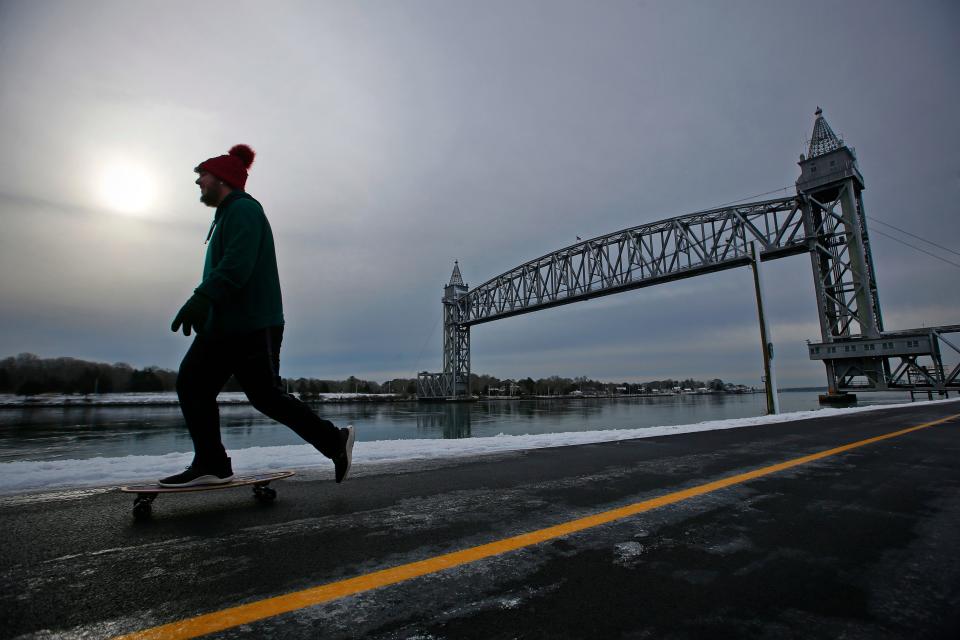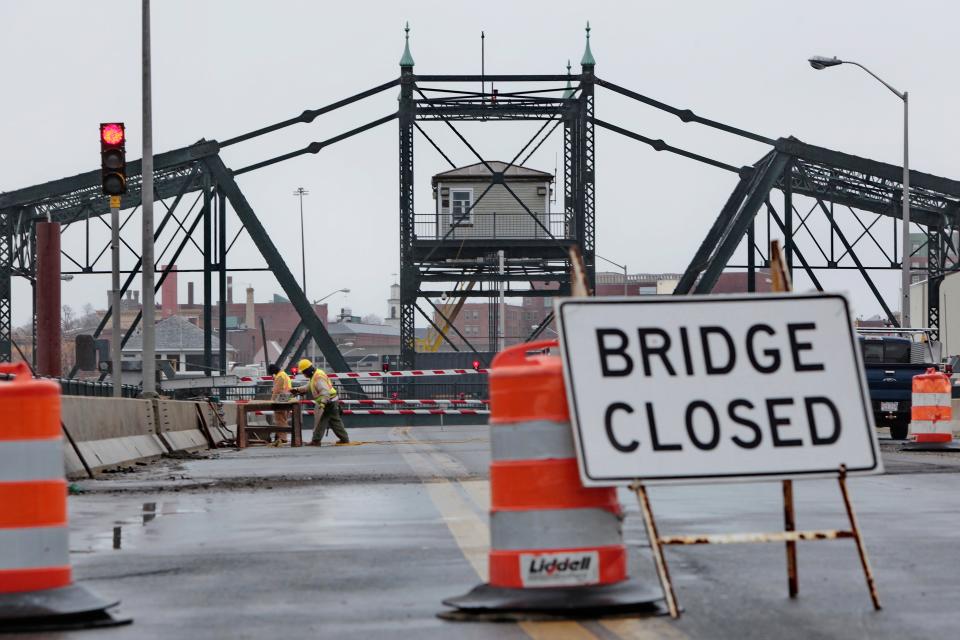New Bedford-Fairhaven Bridge replacement will stand tall compared to what's there now
NEW BEDFORD — The long anticipated replacement to the New Bedford-Fairhaven "swing" Bridge will stand tall when compared to its predecessor.
MassDOT officials say the "vertical lift" bridge design they've selected will provide more channel space for vessels and will take less time to construct - meaning less disruption to vehicles and vessels - than the various alternatives reviewed.
And it will stand tall in terms of height.
The matching towers will stand 190 feet above the road, and offer two opening heights — one at 80 and one at 138 feet — depending on the size of the vessel that needs to pass underneath.

Instead of rotating horizontally to allow vessels to pass on either side like the current bridge, the vertical span bridge lifts up the span and opens more channel space below.
Where are some examples of local lift bridges?
Local examples include the Fore River Bridge between Quincy and Weymouth, and the Cape Cod Canal Railroad Bridge in Bourne.
The new bridge will be 76-feet wide, with four lanes of traffic, and railing-separated sidewalks on either side.
MassDOT unveiled the selection during a public meeting at the Hayden-McFadden Elementary School Tuesday.
“We appreciate MassDOT’s efforts to advance the replacement of the New Bedford-Fairhaven Bridge,” Mayor Jon Mitchell said.
“We look forward to hearing more from MassDOT about its alternatives analysis, and how ultimately New Bedford can have a bridge that reduces traffic, supports economic development, and reflects a high level of architectural design as any landmark so prominent must,” Mitchell added.
State Rep. Bill Straus, D-Mattapoisett, who chairs the Joint Committee on Transportation, says MassDOT got the design choice right.
When he and state Rep. Tony Cabral, D-New Bedford, backed an initial study on the best alternative in 2015 it came back recommending the vertical lift design.

A huge win for the seaport
The updated bridge study was performed by an international specialist in bridge design, he said.
"They weighed all the options and based on cost, construction, time period, disruption, bridge operation, and critically here, navigation, they recommended the vertical lift bridge."
He added, "And I think they're absolutely correct."
It's a huge win for the seaport, he said.
The new bridge will provide an unobstructed 260 feet for vessels to pass through vs. the just-under-100-foot channels on each side provided now.
Bridge closings can be sped up, as well. The span doesn't have to go all the way to the top, but can rise to 80 feet for smaller vessels.
"These can be programmed. The boating traffic learns this, and you can do a shorter duration. You can customize these things in terms of making them operate quicker," Straus said.
The next stage, he said, is the "25% design" threshold where more specific details, like what the sidewalks and bike lanes will look like, will emerge.
Construction targeted for 2027
MassDOT officials say other advantages to the vertical lift bridge include:
Shortest time the bridge will be out for construction, from one year to 18 months vs. three to five years for other alternatives.
Minimizes traffic detour duration.
Minimizes impacts to adjacent/local businesses on Fish and Popes Island.
Construction on the New Bedford-Fairhaven Bridge's replacement is targeted for 2027.
The current swing bridge opened in 1903, and averages 5,000 openings per year to allow vessels to pass. It also averages about 11,500 vehicle trips per day, 500 in both directions per hour at peak times.
This article originally appeared on Standard-Times: New Bedford-Fairhaven Bridge replacement will stand tall

